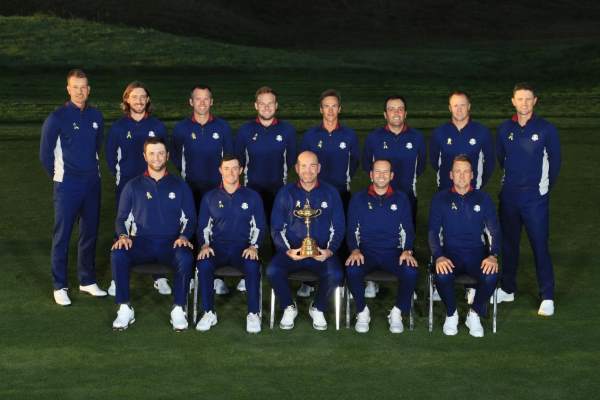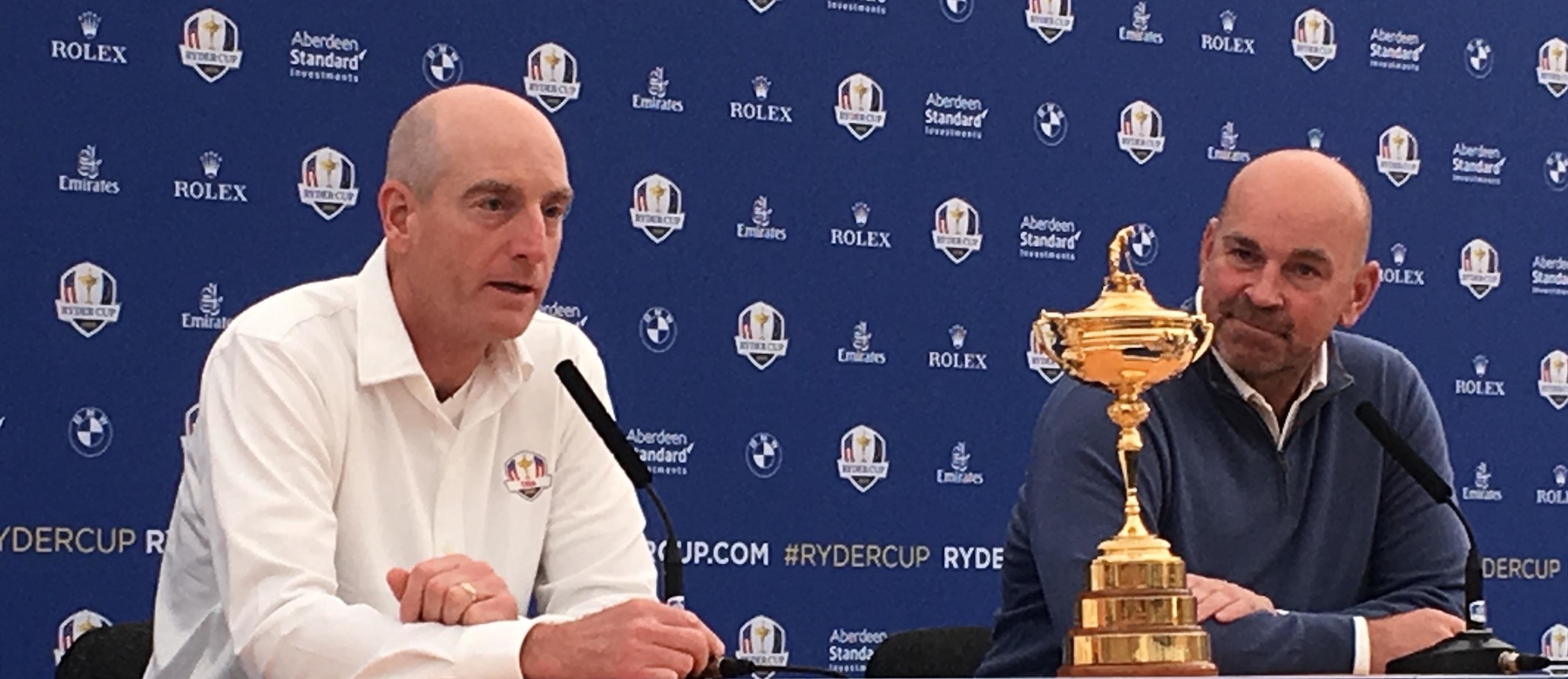It’s never been easy to find the answer to the question of the profits that the modern-day Ryder Cup makes every two years, writes Ross Biddiscombe. The money gathered in from TV rights fees, the hospitality income, merchandising and the sponsorship deals is all kept very secret, but the one certainty is that there are profits aplenty these days. The point is that no one knows the profit – it’s easier, however, to work out an estimate for the income.

One of the few facts available in this area of Ryder Cup knowledge is that none of the matches showed any signs of positive income until the 1985 contest at The Belfry. Nowadays, the Ryder Cup is a cash cow for development programmes, PGA and European Tour initiatives and other events, especially on the smaller tours.
The half a million pounds of profit that Europe’s first victory in 16 years achieved at The Belfry is now a miniscule amount. But estimates of the cost of producing the six days are nigh-on impossible to uncover, so let’s focus on the revenues.
Simple calculations on the sale of six days’ worth of tickets for Ryder Cup week means up to €30 million of income immediately – that’s 50,000 fans per day at Le Golf National paying between €45 and €175.
But that figure is only approximate because ticketing income is a complicated business. Some of those tickets are part of hospitality packages, others are tied up within sponsorship deal and there are no figures on the junior tickets on the Monday, Tuesday and Wednesday which are only €10 each.
The income from sponsorship packages among the 30+ commercial partners are also a matter of best guestimates. The four official partners at the top of this income tree are said to pay between £2 million and £4 million each. Take a conservative estimate of £2 million and shave down the cost of the other two dozen proportionally and the 42nd match is likely to receive around £20 million in sponsorship.
Hospitality is part of sponsorship, so the revenue here is even harder to put together. If £10 million (that is, extra from any hospitality that’s given away via sponsorship deals) is a rough estimate, then so be it.

The same best-guess strategy is often used for merchandise sales. There are 50,000 spectators per day, but many come more than once, while others are children and yet more will resist the temptation to spend even more money than the ticket price, travel and accommodation. So, if 15,000 people per day visit the merchandise areas (that’s 30% of each day’s attendance) and they spend an average of €75 then that’s €1.25 million daily. If that’s conservative, then guestimate that 25,000 fans will buy €100 worth of goodies each day and you arrive at €2.5 million. The answer may lie somewhere in between – maybe €28 million.
Which brings us to the TV rights, which will be a decent amount in the context of the recent PGA Tour deal with Discovery Channels for €2 billion in fees for 11 seasons of US golf to be broadcast outside of America. No one has ever revealed the modern-day TV rights number for the Ryder Cup and it’s not easy because the European Tour and the PGA of America each wrap the match into an overall deal. Therefore, the value of the Cup within a season-long rights package can be a matter of opinion – a figure of €15 million has been rolling around the media for years.
The global awareness of the Ryder Cup via television, radio, internet, newspapers and magazines is staggering. Considering this is a biennial contest between only two of the world’s continents and involves only a seventh of the world’s population, it is remarkable how much attention the event commands.
The 2018 Ryder Cup is set to be available to a potential audience of 500 million viewers in 183 different countries on each of the three days of competition. Although these potential figures can be misinterpreted (remember, this is not the actual number of viewers), the fact that the matches reach so many countries is still noteworthy, and definitely of interest to worldwide sponsors and advertisers.
Plus, this year’s TV event has to be boosted by the presence of Tiger Woods for the first time since 2012. Golf audiences in the US can rise by 40% when Tiger is in the field of a normal PGA Tour event. More eyeballs mean more money and TV sales forces were rubbing their hands with glee when the 14-time major winner swept to victory in this weekend’s FedEx Cup final.
One day, perhaps, the Ryder Cup will be available on an OTT (direct to consumer via the internet) service and then the broadcasting revenues may soar. At the moment, the two TV sales teams (in the USA and Europe) have always gone for traditional TV partners (for example, Sky in the UK and NBC and The Golf Channel in the US), but the question of future income will have to take these internet broadcasting options into consideration.
The bottom line is that the best guestimates for total Ryder Cup income this week is around $85-€100 million. The cost of producing the event? Some is sponsorship bartering, some is absorbed by the TV companies or sponsors, but perhaps a third to a half is a reasonable guess.
 How does this compare? Well, FIFA are said to have brought in around €5 billion ($6 billion) for this year’s World Cup in Russia which included €2 billion ($2.6 billion) in profit.
How does this compare? Well, FIFA are said to have brought in around €5 billion ($6 billion) for this year’s World Cup in Russia which included €2 billion ($2.6 billion) in profit.
In short, the Ryder Cup has come a long way in its 91-year history in terms of commercial support and there are no signs of the money drying up any time soon.
Some of this material is extracted from Ross Biddiscombe’s acclaimed book Ryder Cup Revealed which is available at amazon.co.uk via this hotlink: https://tinyurl.com/y9w75whd

